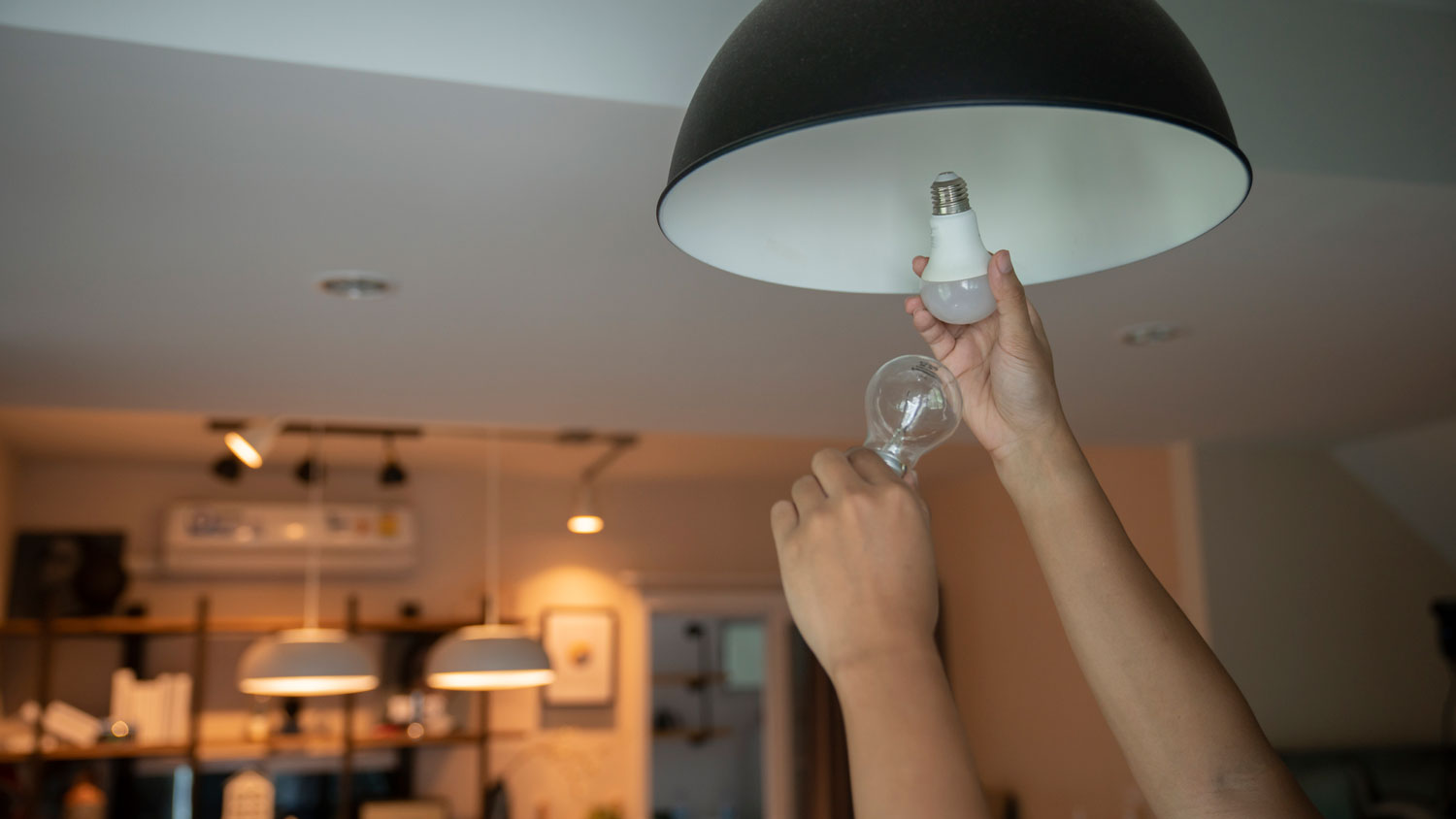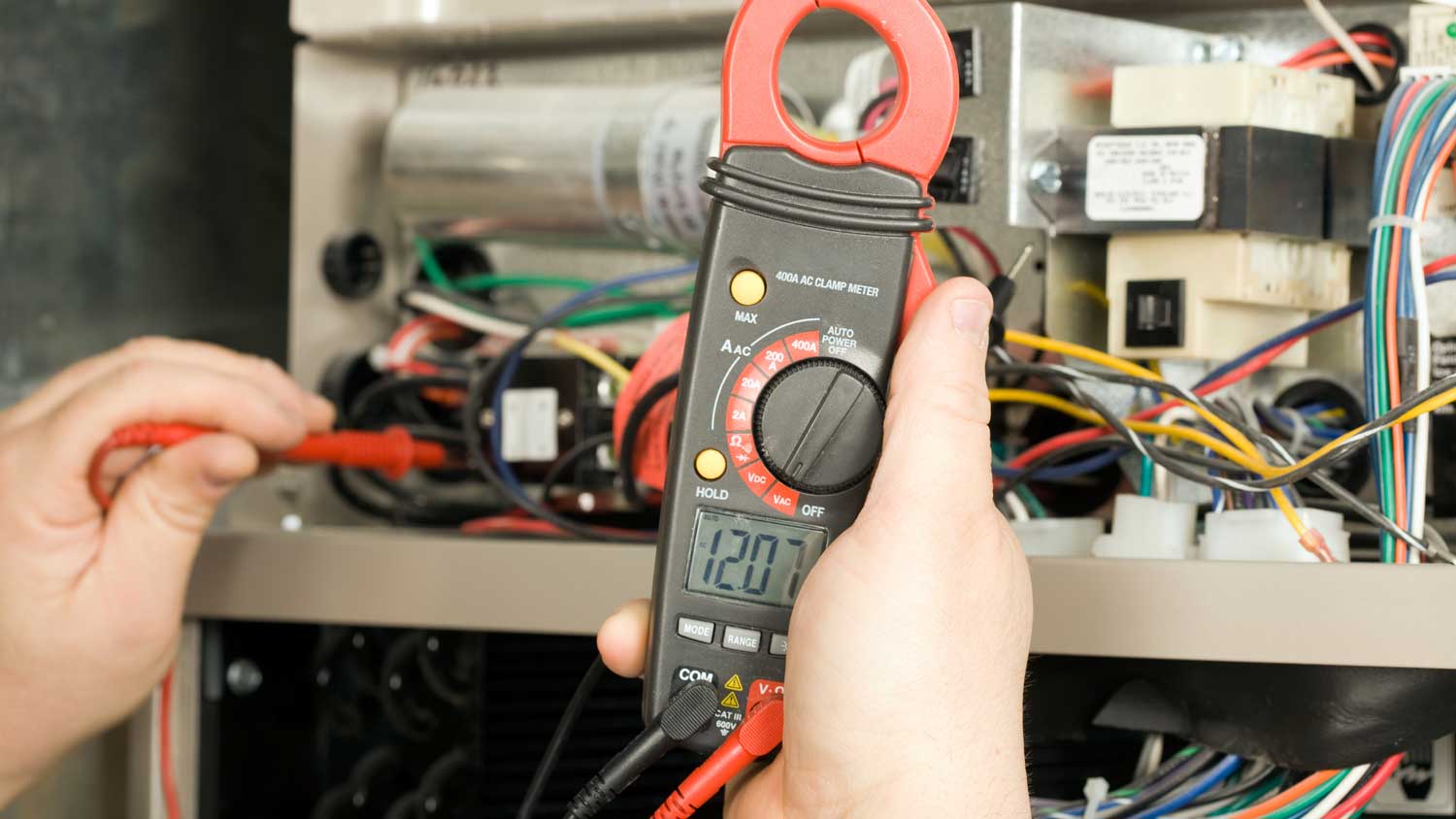Amps vs. Volts vs. Watts: Everything You Need to Know
We’re shining some light on the key differences between these terms


Amps measures the strength or volume of electrical current.
Volts measures the electrical potential of current.
Watts multiples amps and volts to measure overall power.
Home hardware ratings for amps and volts need to match expected loads.
Watts is most useful when trying to save energy or gauge power usage.
Even though electricity runs through each of our homes, not many of us can explain how it works. We’re making things clearer with this guide to amps vs. volts. vs. watts. These common electrical terms are used around the world, and you don’t have to be an electrician to understand them. Here’s a closer look.
What Are the Differences Between Amps, Volts and Watts?

Amps
What it measures: flow of current
Abbreviation: A
Where you’ll see it: electrical panels
Tool used to measure it: multimeter
Volts
What it measures: electrical potential
Abbreviation: V
Where you’ll see it: appliance ratings
Tool used to measure it: voltmeter
Watts
What it measures: overall power
Abbreviation: W
Where you’ll see it: utility bills
Tool used to measure it: multimeter
Let’s start with some basic definitions and analogies to help you make sense of these electrical terms.
Amps (amperes): Amps measure the strength of a current of electrons, or how many electrons are passing through electrical hardware. The higher the amps, the more volume of that current is flowing through. Imagine water passing through a hose: The larger the flow, the more water is coming out of the hose.
That makes amps useful for measuring the flow of electricity in action and showing the rate at which wiring can operate. Larger electrical wiring can typically support higher amps and thus a greater overall number of electrons passing through at once. In manuals or product descriptions, amps are typically abbreviated with the letter “A” like “8A.”
Volts: Volts measure the potential of electron flow. Think of volts like the pressure that’s pushing electrons along—like how water pressure pushes water through your hose. The higher the voltage, the more pressure, and hardware needs to be strong enough to handle it. Voltage is typically abbreviated with the letter “V” like “120V.”
Watts: Watts measure the overall power of an electrical system by combining amps and volts. Specifically, amps X volts = watts. You are multiplying the amps or volume of electron flow by the volts or pressure of the flow to show how many electrons are passing through the system (or how many it can support).
Back to the hose analogy: A hose with high water pressure and a large nozzle can produce a lot of water over a short time. Decrease either of these factors, and the resulting amount of water will decrease significantly, too. Offset a decrease in one with an increase in the other, and it may be possible to maintain the same amount.
Because watts are an easy way to show what a system is capable of, they’re a very common descriptor for our everyday devices. Your phone charger, for example, is rated for a certain amount of watts, like “25W.”
Appliance Differences

With the technical descriptions out of the way, let’s talk about how amps, volts, and watts affect your daily life and appliance use.
Voltage in the United States is available to households in two different forms, and routed appropriately: 120V and 240V. Most average appliances and wall outlets use 120V. Large appliances like dryers, oven ranges, and major heating units use 240V. This is why large appliances come with different plugs and require different outlets (also known as receptacles). Hardware always needs to be rated for the incoming voltage and amps to avoid damage.
Amps in appliances aren’t quite as straightforward as volts. Basic outlets are typically rated at 15A, which is all that’s needed for devices like lamps. In the kitchen, bathroom, or laundry room where you may have larger appliances, 20A wiring can offer a wider range of support. Very large appliances often use 30A but you’ll sometimes see 40A and 50A ratings, too (electric heating elements in particular can require more amps). If your circuit breaker is properly labeled, you can check it to see the amp ratings for different wiring sections of your home.
Watts simply describes the amount of power that an appliance can use. It doesn’t always use that much power, but it does max out at that level, especially when dials are turned all the way up. An oven, for example, is often rated around 2,500W, while a ceiling fan may only be around 50W. When you look at the wattage on a light bulb, higher watts mean a brighter bulb because it can consume more power. Likewise, higher watts for a microwave means it can create more heat.
You can also examine how many watts in total your home uses in the average day. For these larger measurements, kilowatts (kW) or 1,000 watts is used, as well as kilowatt-hours (kWh), or how many kilowatts a device uses over the course of an hour.
Battery Differences
You can find voltage and amps (or amp hours/Ah) specifications on batteries like the one used in your smartphone or the battery packs for home power tools. This can tell you important things about their function.
Amps on a battery indicate the amperage it can supply, and is typically given as Ah or mAh (milliamp hours), showing the amps a battery can provide for one hour. Very large batteries also include a C rating, which shows how many hours the battery can supply that many amps—for example, C6 means it can supply that many amps for six hours. Bigger Ah numbers usually mean the battery can last longer while working more efficiently.
Volts in a battery show electrical potential between the battery’s negative and positive terminals, which again indicates the electrical “pressure” the battery can produce. A battery always needs to provide, at a minimum, the voltage that a device is rated for. Higher voltage on a battery typically means it has more cells and can provide more power for longer. It’s also important to note that real voltage on a battery tends to decrease slightly as capacity decreases, which is why it’s important to keep batteries charged.
As for watts, they don’t matter as much here as long as amps, amp hours, and volts all match your equipment requirements.
Safety Differences
The higher the volts, the more likely that an accident can send large amounts of electricity into a human body. This is affected by many factors, including our resistance to electricity and if it’s found an easier way to enter the body (like via wet skin or even a ring someone is wearing). But higher voltages make it much easier to overcome resistances and send dangerous levels of electricity into people. Broadly speaking, once an electrical contact point reaches 30V, it can create potentially dangerous or at least unpleasant shocks. Over 50V, and the current can cause harm. At 500V, currents can be deadly, and there’s an increased risk of an electrical fire, too.
Amps, or in this case milliamps (mA), measures exactly how much current is entering the body; this is what does the real damage. With high conductivity and no protection, even a low voltage can channel high milliamps into a person and cause damage. Higher voltages just make it more likely that more amps will pass through. At just 1mA, a human probably won’t feel anything. At 10mA, muscles start to contract, creating tingling and shocking sensations. By the time the current reaches 100mA, it’s strong enough to cause burns and disrupt or stop the heart.
Measuring Differences

Your circuit breaker can only tell you so much. How do you—or a local electrician working at your house—find the different amps or volts for wiring?
For measuring volts, pros use a voltmeter, which attaches to two contact points to measure the voltage between those points. Most modern voltmeters give a digital readout so you can quickly see if wiring is working properly and what kind of current it supports.
For amps, the proper tool is technically an ammeter, but it’s rare to find one as a solo device. Instead, electricians use a multimeter, a combo device with different modes that can test current, voltage, resistance, amps, and more.
A multimeter can also measure watts. Other devices, like your home’s electrical meter or smart plugs, can track watts as well.
Energy Saving Differences
If you want to cut your energy bills, amps and volts aren’t as useful as watts. Watts is the fullest measure of the electricity that a device is consuming, so it’s the best way to check and track energy usage. Smart plugs or smart meters with energy monitoring can show you the watts used in a day and the KWh hours of energy use over time, allowing you to make adjustments.
Sometimes, amps and volts can help you save energy, too. One example is fast charging, where the voltage increases but the amps remain the same or decrease on a device you’re charging. This helps charge batteries faster while using less power to do so.
Frequently Asked Questions
Compared to amps, volts, and watts, ohms are a different kind of measurement, though also very common. Ohms show the resistance of materials like wiring: How much they impede the flow of electrons. The reason household wiring is usually copper or aluminum is that these materials are affordable and also have lower ohms, which means low resistance/high conductivity.
Yes, but our analogy with the water hose doesn’t really work here. You see, electrical flow isn’t constant: It ebbs and flows like waves, coming in pulses of power. Hertz measures the rate of change in the flow of electricity, or how often it ebbs and flows. For example, 60Hz means that the electrons pulse through wiring 60 times per second. When they are pulsing, they’re in a brief retreat. Almost all United States equipment is rated for 60Hz.
No, because amps and volts measure very different things. However, you can use basic equations to find amps or volts by using data about one of the measurements to calculate the other.
The standard voltage for United States power outlets isn’t shared around the world, and neither is the shape of the power connector. This is why you need travel adapters when spending time abroad. Where the United States typically uses 110/120V outlets, outlets in Europe typically use 220/240V. Power outlets can vary in other ways around the world, too. Not everyone uses the 60Hz frequency, for example, and not everyone even uses AC power in outlets. Always do your research when traveling to see what you need.



.jpg?impolicy=leadImage)

- Home Generator Repair
- Lamp Repair
- Electric Repair
- Generator Installation
- TV Antenna Services
- Emergency Electricians
- Commercial Electricians
- Attic Fan Installation
- Attic Fan Repair
- Exhaust Fan Installation
- Electric Inspectors
- Subcontractors
- Electrical Construction
- EV Charger Installer
- Chandelier Installation
- Doorbell Installation
- Bathroom Fan Installation
- Ring Installers
- Electrical Panel Upgrade
- How Many Amps Does a Fridge Use? A Look at Full and Small Sizes
- Electrical Load Calculation: 7 Steps to Determine Your Home’s Electrical Needs
- How Many Outlets on a 20-Amp Circuit: Electrical Load, NEC Requirements, and More
- How Many Watts Does a House Use, and Why Does It Matter?
- How to Tell What Amp Service Is in Your House
- How Many Watts Does an Air Conditioner Use?
- Shedding Light on the Best Types of Light Bulbs for Your Space
- 11 Handy Tips and Tricks to Help With Your Next Home Project
- 10 Most Common Plumbing Problems Every Homeowner Should Know
- How To Upgrade Your Electrical Panel Safely










